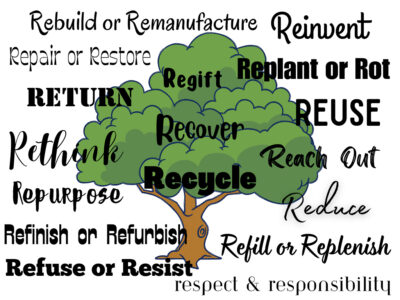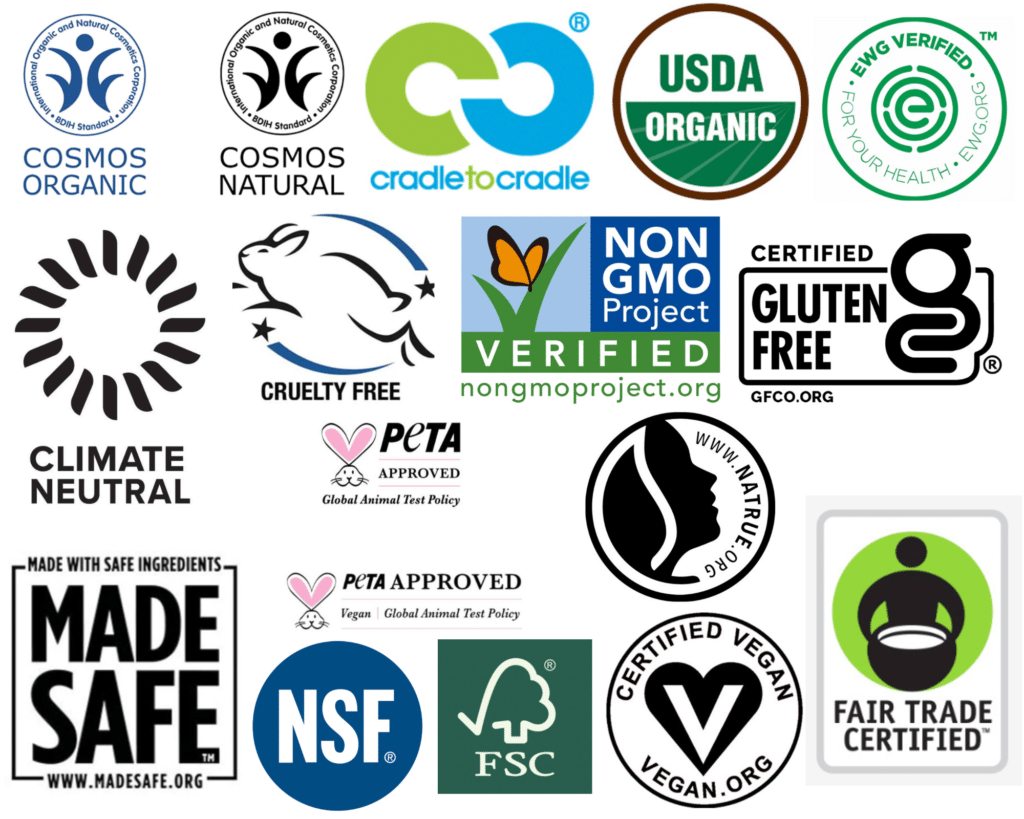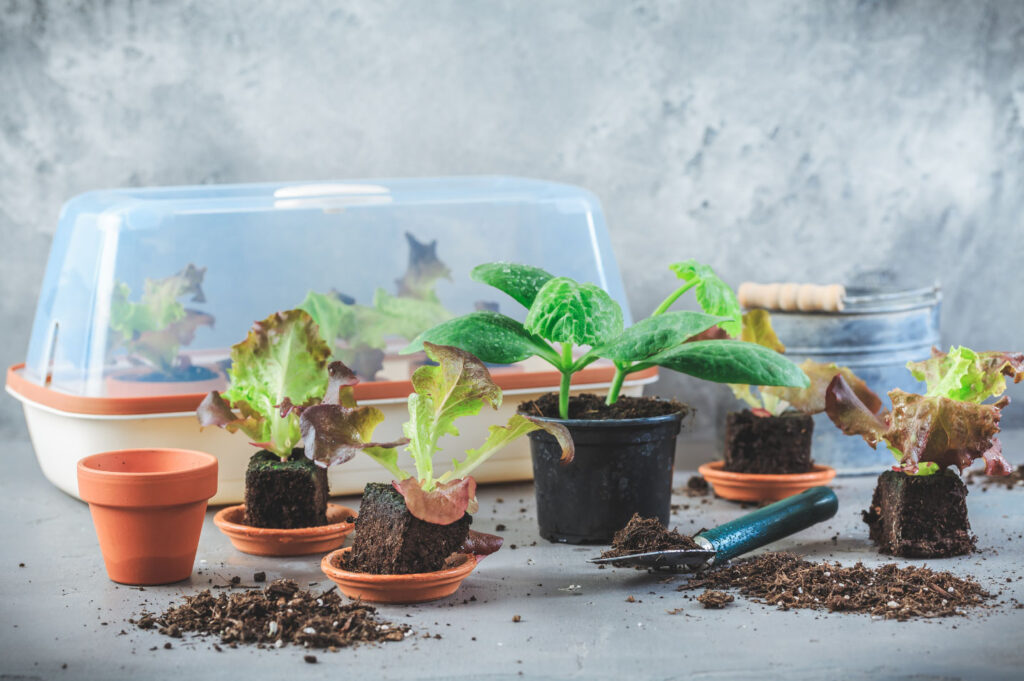How To Shop Sustainably on a Budget
Estimated reading time: 15 minutes
There is a common conception that living a sustainable lifetstyle is expensive. It is usually true that genuinely responsibly made and eco-friendly items tend to have a higher price tag. However, shopping sustainably on a budget is not only possible but not all that difficult. If you’re here because you want to learn a few eco-friendly living tips for your home, or specifically, how to shop sustainably on a budget, read on!

Jump Ahead:
Why are sustainable products more expensive?
How to live sustainably on a budget
Shopping sustainably on a budget
How to shop sustainably for clothes on a budget
How to eat sustainably on a budget
An eco-friendly home saves you money
More general tips for sustainability on a budget
Eco-friendly bargains and discount codes for sustainable brands
Why Are Sustainable Products More Expensive?
Time for some hard truths about the cheap items we have all been buying.
One – they are made from low-quality, non-earth-friendly materials that are not built to last. Take plastic, for example. Very cheap to make, but as we all know, so detrimental to the environment. Fabrics like polyester, nylon and acrylic are all plastic and fossil fuel derived. Aside from their massive carbon footprint, they also shed microplastics that enter the water systems when washed.
Two – They are likely made by people who are grossly underpaid, working far too many hours in unsafe buildings, and being treated poorly. These “cheap” items that we think we’re getting a great deal on may have even been made by children. This is not okay.
So, a quality item made from durable, eco-friendly material in a factory that pays at least a living wage and treats its employees well will cost more. Simple as that. Not to mention the costs of offering employees things like health benefits and vacation time, as we would all expect from an employer.

We may be getting a fantastic deal on those cheap items at the checkout, but someone somewhere is paying the price!
But how can I afford more expensive, sustainable items?
How to Live Sustainably on a Budget
There are several options to be eco-friendly and socially responsible on a budget. Let’s explore the main points and some pro tips and tricks to get you feeling good about your purchases and impact on the environment and people.
Embracing Minimalism
Tying into the idea of minimalism is the thought that “the most sustainable item is the one you already own.” Although making sustainable purchases is the goal, throwing out everything you own to replace it with more earth-friendly items is definitely not sustainable.
One of the best ways to live sustainably on a budget is to practice minimalism. The question “How can I afford more expensive sustainable items” needs the word “more” removed. If we buy fewer, more expensive sustainable items rather than many cheap ones, the chequebook balances! Also, studies have shown that minimalists tend to live more stress-free, happier lives.
Buying Second-hand Items

Thrifting is one way you can get your green on at bargain prices. When we buy second-hand items, we save the sourcing, manufacturing and shipping costs on the planet of a new item. We’re also potentially saving that item from ending up in a landfill somewhere. Anything can be found previously loved and given a second life, from clothing to housewares, recreational gear, and electronics!
Technology has made second-hand eco-savvy budget shopping even easier. Aside from your local thrift shop, there are countless platforms online where you can seek out specific items. Many sustainable brands have even started resale outlets on their websites, where you can buy their used products at discounted prices.
Learn and incorporate the Rs of sustainability
There are far more ways to be sustainable than reducing, reusing, and recycling. Read our article “The 10+ Rs of Sustainability” to learn them all. Incorporating these practices into your life will help you be more environmentally friendly and save money!

Opt for High Quality and Durability
As mentioned above, when we purchase fewer high-quality, sustainable items, we spend the same amount on the oodles of inexpensive stuff we’ve accumulated. A bonus to buying durable items? They last way longer, therefore needing to be replaced less often, saving you money!
Shopping Sustainably on a Budget – What to Look For
Affordable Eco-Friendly Products for Home and Recreation
As previously mentioned, we want to avoid single-use or cheaply-made plastics. If you want to purchase an item in plastic, look for BPA-free ones made from previously recycled plastics.
Look for non-plastic budget-friendly sustainable alternatives that are durable, long-lasting, and eco-friendly. Some examples are FSC-certified wood, glass, and metals like stainless steel or infinitely-recyclable aluminum.

A few sustainable budget-friendly eco-conscious shopping websites to check out for plastic-free and eco-friendly products are Life Without Plastic, Zero Waste Store, & Plastic Free Pursuit.
How to Shop Sustainably for Clothes on a Budget
The fashion industry is among the worst offenders regarding socially irresponsible manufacturing and using unsustainable materials. Fast fashion has caused us to purchase too many cheap items we don’t truly need that get tossed in the trash. According to this article from The National Geographic, three-fifths of all clothing ends up in landfills or incinerators within a year of production. This is one truckload of used clothing dumped or burned every second. It’s time we consider slow clothes and creating a capsule wardrobe of fewer, more versatile and durable items.

There are many ways to find outfits on a budget. The best way is buying second-hand or clothes-swapping with a friend. Another way to attain sustainable fashion on a budget is to sign up for email notifications from eco-friendly, slow fashion brands to watch for sales. If you’re handy with a sewing machine, you could test your skills and create some unique pieces using thrifted fabric or up-cycling old articles of clothing you no longer wear. Style on a budget doesn’t have to be difficult!
Looking for budget-friendly footwear? Check out our article “Affordable Eco-Friendly Shoes from Sustainable Brands.”
What to Look For in Eco-Friendly Fabrics
For sustainable styles, look for these fabrics rather than virgin polyester, nylon and acrylic:
- All-natural organic fabrics like hemp, bamboo, and organic cotton are excellent choices.
- Materials made from recycled plastics like old water bottles.
- TENCEL fibers are produced by environmentally responsible processes from sustainably sourced natural raw material wood.
- Up-cycled fabrics – some brands use old clothing and scrap materials to make new items.
- Many slow-clothing brands are finding other unique ways to create eco-friendly fabrics. One example is the one that Coalatree makes from recycled plastic and used coffee grounds.

Where to Buy Sustainable Clothes
Remember that sustainability also has a social pillar. Even if the items are made with eco-friendly fabrics, they may not have been manufactured responsibly. There are a few ways you can check before you buy.
You could use a sustainable fashion app that rates brands on multiple factors for sustainability. A couple to try are Good on You and Done Good. Ethical fashion brands will also have clear, detailed and transparent information about their social responsibility policies on their website. They may be hiding something if it’s not easy to find or vague. Lastly, you can watch for third-party certifications like Fair Trade, Certified B Corps, and WRAP.
You can also check out some sustainable clothing brands that have sales or clearance sections on their website below.

How to Eat Sustainably on a Budget
Now, time to talk about food and groceries. So far, none of the above points can be applied to food (second-hand lemons, anyone?!) Although there are a few tips for shopping to feed yourself sustainably on a budget, it is more challenging than the other departments of life. Although eating at restaurants is nice, cooking at home is more affordable. Plan some time to food prep for the week ahead and you’ll be less tempted to grab that take-out meal for lunch!

Buying in Season
Let’s talk produce. One of the best ways to shop sustainably (and affordably) here is by buying what’s in season in your region or country. Fruits and vegetables are cheaper in season, and you can rest assured that their environmental shipping costs are lower. You’ll also be supporting the local economy! You can use this awesome website to determine what’s in season in the U.S. by state. If you can afford the slight price increase of organic produce, you’ll save the environmental impacts of the chemicals spared, and you’ll be ingesting fewer toxins. Win-win!
Eating Less Meat
While we’re talking about veggies, let’s consider eating less meat. Not only does meat tend to be more expensive than other food groups, but meat has a far higher (negative) environmental footprint compared to vegetarian protein sources. Aside from the massive amount of water needed to raise livestock, clear-cutting of trees for land requirements also leads to the loss of animal habitat, contributes to climate change, and puts Indigenous peoples and communities at risk. Even just decreasing your meat consumption a little bit helps. You can read more details about how livestock farming affects the environment and people in this article by Green Peace.

Decrease Food Waste
One more way to make your money go further regarding food – decrease your food waste. Next time you need to dispose of food that has gone bad or expired, make a mental note about it so you can purchase the right quantity for your needs the next time. You can do a routine inventory of your fridge, pantry and freezer to check for items that may need to be used soon so they don’t go to waste. Another great way to increase your sustainability is to start a compost bin and use the nutrient-rich soil created in your garden to grow your own fruits and veggies!
Of course, you want to remember to bring your reusable bags with you when you go grocery shopping. Bonus if they are also made responsibly from eco-friendly materials like this Organic Cotton Mesh Produce Bag from Life Without Plastic and the Love Your Mother Organic Tote Bag from the Zero Waste Store.

An Eco-Friendly Home Can Save Money
In addition to adopting eco-friendly and conscious shopping habits, you can also make some small (or large) adjustments to your home that will help you meet your budget:
- Save on your energy, electricity, and water bill by reducing water use and adjusting your thermostat in winter and summer.
- Choosing low-flow faucets, toilets and shower heads, and water-efficient appliances can decrease your water use substantially, saving you some funds on the water bill too.
- Installing a bidet attachment to your toilet will save you money over time and some of the 15 million trees pulped each year for toilet paper needs in the U.S.
- Installing solar panels, and replacing your windows, doors, or insulation can be costly, but it will make your home energy efficient and save you money in the long run. Many cities offer programs or rebates to offset the cost of making this switch.
More sustainable shopping Tips on a budget

In addition to the area-specific strategies already mentioned, here are some general tips to help you be more sustainable without breaking the bank:
- Take advantage of intro and first-time buyer discounts. Most brands will offer 10-20% off your first order just by signing up for their email newsletter (which you can unsubscribe from later if you want!)
- Stay signed up for those updates, or follow sustainable brands on social media to watch for sales. Although they only happen sometimes, as most brands that believe in circularity don’t over-produce and have excess items to offer at discounted prices, you can still find them.
- Follow us on Instagram and Facebook for our “Thrifty Thursdays” posts, where we share sales and discount codes for sustainable brands!
- Consider buying refurbished electronics rather than new.
- Have some friends that believe in sustainable living? You can swap and share items with them that are no longer needed or aren’t used daily, like camping gear or fancy cookware.
- Take care of your possessions. Store and wash items according to instructions, and make minor repairs or mendings as needed rather than replacing.
- Check out some sustainable shopping apps to help you seek eco-friendly but affordable fashion, food, and housewares.
- Shop for sustainable clothing in the off-season for sustainable fashion on a budget
- Consider renting items rather than buying if you know you won’t get enough use out of them to justify the cost, like camping gear, a dress for an event, or special tools.
- Stop buying single use items like paper towels, ear swabs, and plastic baggies. Replace them with reusable ones when you run out and in the end you’ll save money (and the planet!)
Some Sustainable Brands with sales

The following eco-friendly brands have freen deals and discounts on items due to imperfections, product clear-outs, or just because they want to give their customers a deal. Take advantage of these environmentally friendly choices that won’t break the bank!
Health & Beauty:
- River Organics (organic and vegan personal care products) sells their “Imperfects” at a discounted rate. Use coupon code ROANDSS for 15% off!
- Chagrin Valley Soap & Salve Company has specials on sale on this page.
- You can use the code PLAINEANDSS for 20% at Plaine Products (hair and skin care).
- Biobidet (bidet seats and attachements) has an outlet area with discounted prices.
Household Items:
- Zero Waste Store (many kinds of zero waste items) sells “Ugly Shampoo Bars” and allows you to buy two at a time for 50% off!
- Life Without Plastic (many plastic free & eco-friendly items) has Last Chance Sales, Life Without Packaging Sales, and Clearance Sales.
- Etee (many plastic free & eco-friendly items) has a sales page.
- Plastic Free Pursuit (many plastic free & sustainable items) has “Sale” and “Bundles” page on their website to help save you money. Use code SUCCESSFULLYSUSTAINABLE for 10% off!
- Ecolunchbox (lunch boxes, bags, and accessories) often has lunch sets on sale.
- Stasher silicone bags has a sales page on their website.
- Pela Case (eco-friendly phone cases and accessories) has a Last Chance page you can find in the menu, where you can find deals on products.
- Tikiri Toys (sustainable children’s toys) has a sales page. Use code TIKIRIANDSS for 10% off.
- Smiling Tree Toys (sustainable wooden toys) has a clearance section.
Clothing and Accessories:
- Coala Tree (outdoor gear and accessories) has a Sales tab in their menu. Use coupon code ECOGEAR15 for 15% off!
- Kotn (fashionable items made from 100% organic Egyptian cotton) has sales in both men’s and women’s categories.
- The Good Tee (organic cotton clothing) has a sales page. Save 10% with code TGTANDSS.
- Nisolo (footwear and accessories) has a men’s and women’s sales page.
- MPG (casual and sportswear) has a warehouse page.
- Etiko (casual footwear and clothing) has a clearance page.
- MATE (organic clothing) has a sale page.
- Astor & Orion (sustainable jewelry) has beautiful pieces for $50 or less.
- Encircled (women’s wanderleisure) has a salerack.
Final Thoughts
One of the easiest ways to live more sustainably on a budget is to adopt a minimalist attitude and lifestyle. The less we buy, the more eco-friendly we become, and the less money we spend! When new items are required, look for second-hand or high-quality durable items that will last longer, making them worth the higher price tag. Sustainable shopping strategies for tight budgets can be pretty simple!
Living sustainably on a budget is possible with a change in mindset, a little effort, and support from like-minded individuals! You’ve got this!
All products recommended to you on Successfully Sustainable are independently researched in depth. To avoid waste and lead a minimal lifestyle, we test products only when required. This post contains affiliate links. If you buy something through our links, we may earn a small commission. Learn more about this here.




